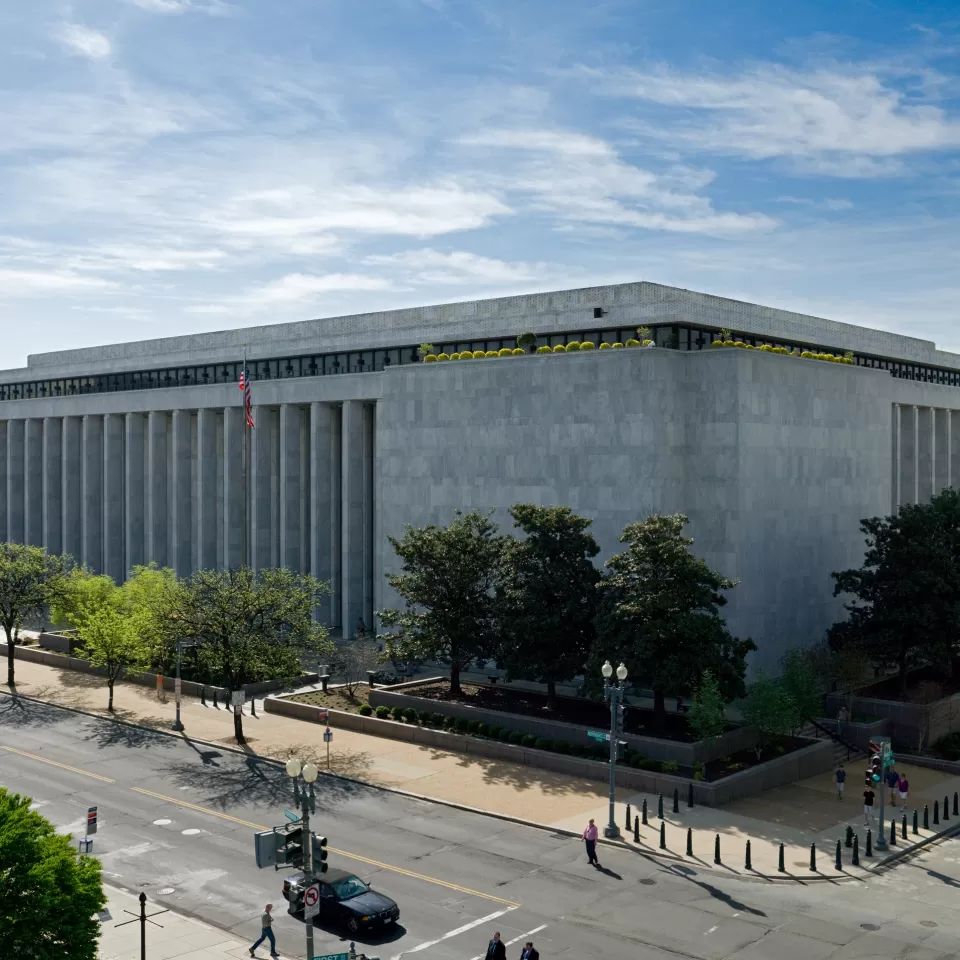Library of Congress Buildings
As the Library of Congress collection grows, so does its need for more storage space; it receives approximately 250,000 new items every year. In 1994, an Act of Congress transferred one hundred acres located at Ft. Meade to the AOC "to provide facilities to accommodate the varied long term storage and service needs of the Library of Congress and other Legislative Branch agencies."
The Book Storage Facility currently consists of six book 'modules,' with a seventh in progress and planning for potential expansion to 13 modules. The modules boast 35-foot high ceilings with rows of book shelves that reach 30 feet. Books, maps, globes, photographs, microfilm and music are stored in one of 10 different sized boxes and placed on one of six different sized shelves. There are three separate climates carefully maintained by the AOC — with temperatures set to 50, 35 and 25 degrees Fahrenheit — to accommodate the various items. Staging areas, set up outside of the chilly storage rooms, are used to allow items to acclimate to the varying temperatures and reduce condensation so they can be safely moved from one climate to another.
The items are tracked through an automated book system that enables workers to quickly find and retrieve items. The process of "checking out" a book is a bit more involved given the distance the items have to travel from shelf to hand, but items are transported between Fort Meade and Capitol Hill every day. Requests for items come in from the Library of Congress and are retrieved at Fort Meade via a barcode that narrows down exactly which row, shelf and box house the particular item of interest.
Given the height of the shelves, workers often have to use specialized lifts to retrieve items. A super-flat floor was installed to prevent the lifts from leaning and turning over, knocking over the thousands of carefully catalogued items. Magnets were also installed in certain spots in the floor, a few feet from the end of aisles, to slow the lifts and prevent crashes. Every detail of the modules is centered on protecting history in its various forms and preserving it for generations to come.



